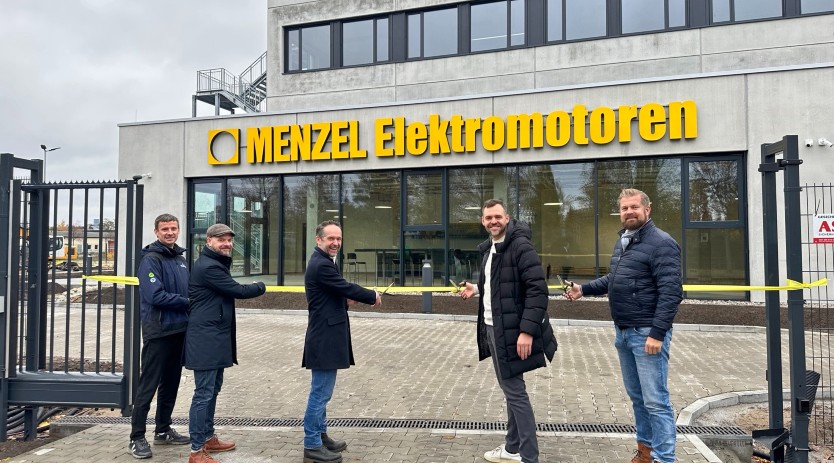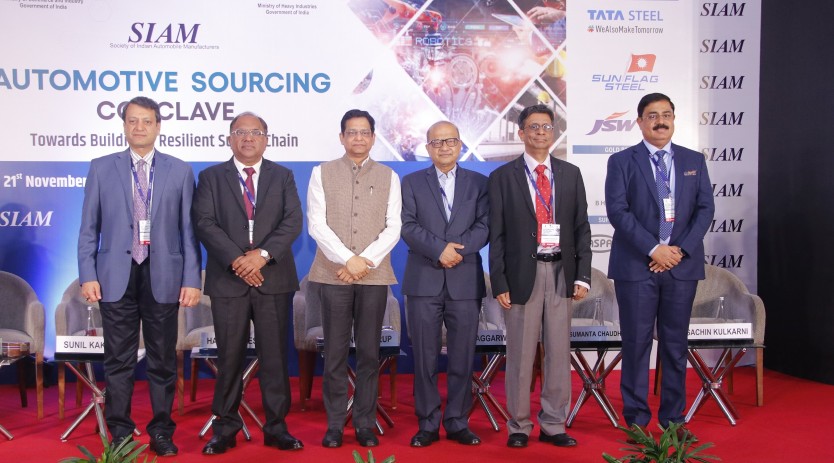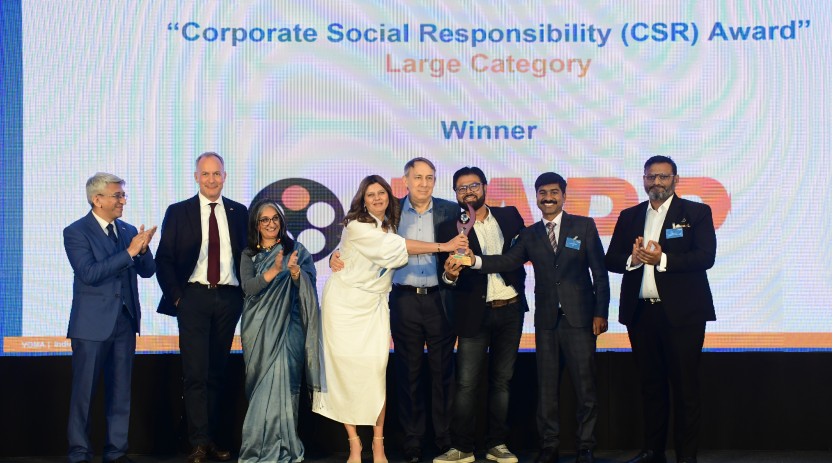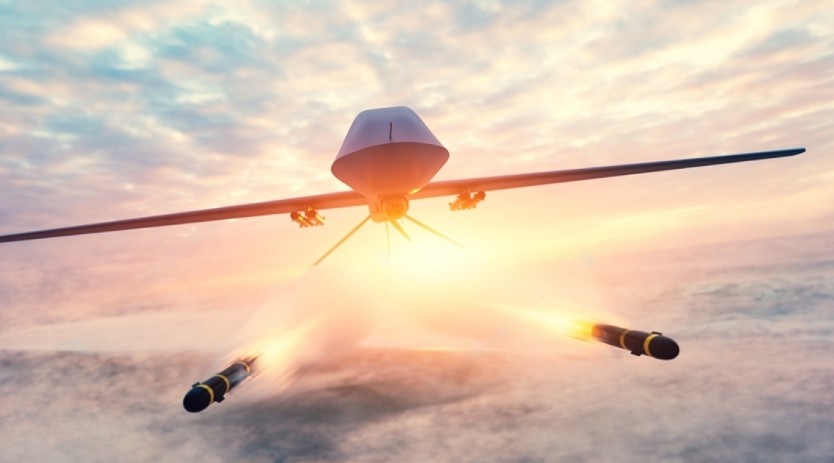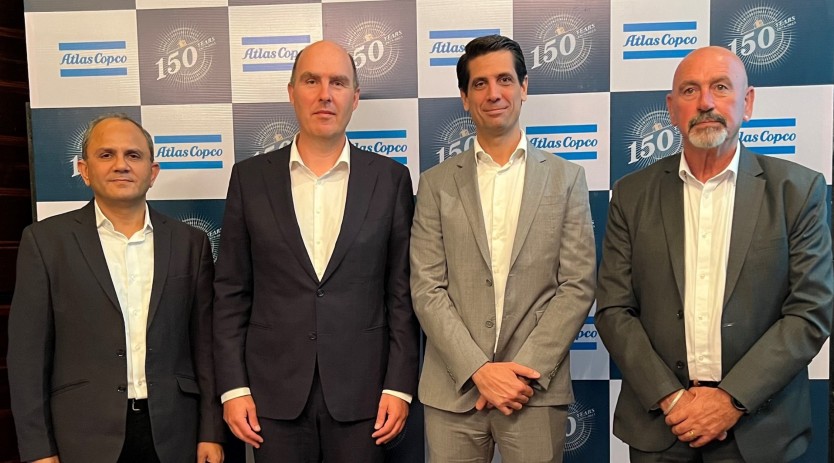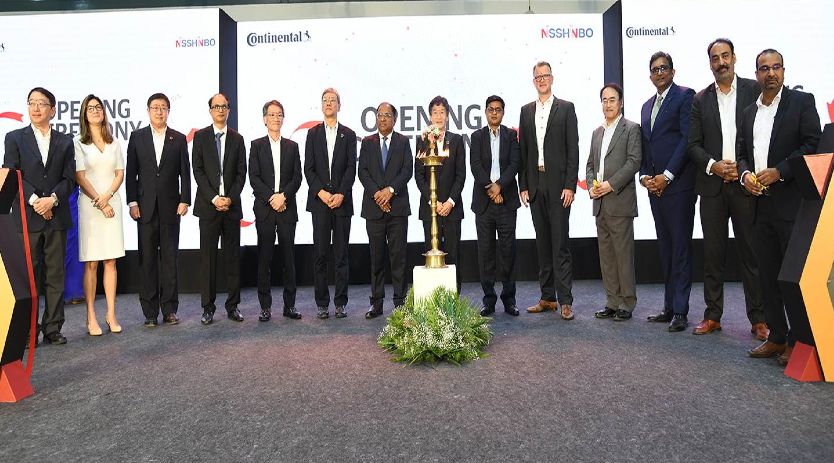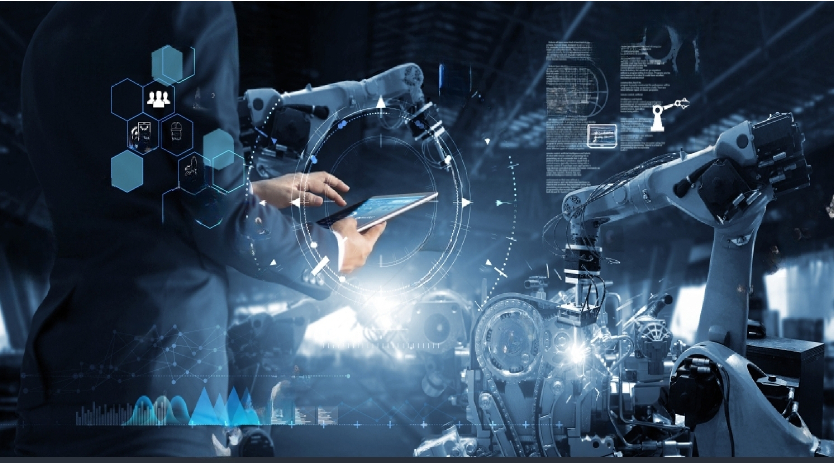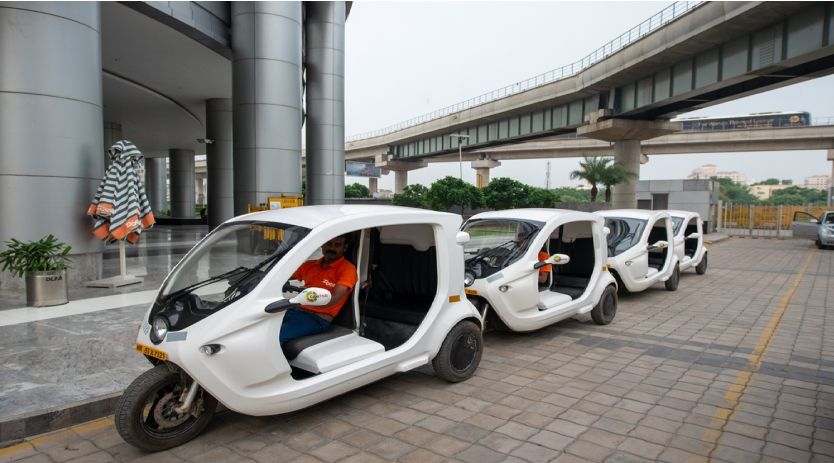Are robots still expensive?
March 29, 2016 5:40 pm
An overview on the adoption of robots in the Indian manufacturing sector and whether robots are still expensive
Robotics is on the brink to revolutionise manufacturing sector. Unlike earlier, today as robots become smarter and faster, it is more in demand to ensure more productivity in less time. Adaption of robot in Indian manufacturing seems certainly bright and promising.
Lack of skilled workers is one of the main drivers of automation or robotics in Indian manufacturing sector. To ensure the quality of products and processes improve considerably organisations are moving towards robotics.
Adoption of roboticsRobotics opens up a plethora of opportunities for both entrepreneurs and students. Industries across a range of sectors such as automotive, atomic energy, defence, space, metals, textiles and manufacturing use robotic technologies very extensively. Robots are required everywhere to improve productivity. They are also being used in operation theatres and rehabilitation centres to augment the quality of life. Developed countries like Japan and America have been using robots to clean rooms, entertain etc. It is an ever growing field and many avenues have opened up in recent past. Therefore students who have the required skill sets will be favoured by such industries. The automation industry is a big consumer of robotic technology. Using such technology, the quality of products and processes improve considerably.
V V Kamath, National Sales Director, Fronius India Pvt Ltd informs, “The robotic market is growing at 25 per cent CAGR in India. Automotive like specific sector has adopted the robotics on large levels. The general manufacturing sector adaptation of robotics is picking up but in very slow phase. For every 10,000 persons employed in manufacturing sector we have only 2 robots which are comparatively very less. Where in this population is 36 robots in China, 79 in America, 164 in USA, 478 in Korea. But in automotive sector we have 58 robots for every 10,000 employees which seem to be a healthy figure. But in coming days Robotic option will be more adopted in various sectors because the skilled manpower shortage.”
Industries across a range of sectors such as automotive, atomic energy, defence, space, metals, textiles and manufacturing use robotic technologies very extensively. Robotics and automation has the potential to revolutionise the industrial scenario.
“Robotics promises to bring the same result as computer systems have brought in services and other sectors. However, many developing nations like India, Thailand, Indonesia, Philippines are still to adopt robotics and automation in a big way,” believes Rashmi Ranjan Mohapatra, Managing Director, Kemppi India.
Indian industries have realised the importance of robotics and automation and are willing to make substantial investments as the cost of skilled labour is rising and production processes are getting speeded up without compromising quality standards. These factors are forcing Indian manufacturers to consider industrial robots as a viable option, despite the relatively high-capital costs.
The lack of skilled workforce is one of the major challenges faced in the country by most of the industries. “The workforce is usually underutilised to their capacities by assigning lower-level jobs which restricts the growth of the employee and employer. The automotive sector has been the driving force for automation, but the focus has now shifted to sectors like food, packaging, pharma and education,” says Ajay Gurjar, Dy. COO and Marketing Officer of Robotic Division of Yaskawa India Pvt Ltd.
Robotics is one of the most suited for industrial automation (manufacturing, packaging, assembly etc.) as most of the tasks in these sectors are dull, dirty and dangerous for human beings and utilising robotics and automation in these sectors would improve productivity, safety as well as the quality of the end product. Human operators can then take up more value added roles in the industry.
S K Palit, Head of Product Improvement, Equipment Quality, CCC and Technical Support to WAPS, Ador Welding Ltd says, “Those who wish to make a career in robotics – it is a multidisciplinary engineering field. One gets to understand the integration of mechanical, electrical, electronics as well as computer science disciplines in this field. Depending on the focus area, they can move on to various engineering domains of their choice.”
Are robots still expensive?Robots are not used in Isolation. Robots are one part of the automation and there are many parts which together make the ‘Robotic Automation’. Like PLC, End Effector of the Robot (Handling means the Grippers, Welding means the Welding Systems), Fixtures and Handling Equipment, Safety Gadgets. All these solutions are together designed, manufactured, procured and delivered by robotic integrators.
“The robotic integration sector is more organised and big players with respect to industry specific and application specific are available in Europe. In India this industry is rapidly growing but they are facing more problems like high attrition of skilled manpower and scarcity of experienced people. This makes the end solution more expensive for customer. But in Isolation the robot prices are more or less same globally,” observes Kamath.
The cost of adopting robotic technology is still very high due to the cost of procuring imported hardware components as well as training personnel. As robotics is a multidisciplinary field, acquiring and retaining quality talent is a big issue. Lastly, SME customers need to see visible ROI before they proactively adopt robotics. Capital-intensive nature of robotics adoption when compared to the low cost of human labour clearly tips the scale in favour of the latter.
Speaking about robots being expensive, Palit says, “Almost all major robotic module manufacturers are acutely aware of the issue of robots being expensive and are coming up with lighter, more versatile, more agile and application-specific modules, which can be used as stand-alone systems or clubbed together in different combinations as tandem modules for achieving much more complex manufacturing jobs more quickly, more efficiently and with assured reliability and quality.”
Gurjar is of the opinion that as per current market uses; robot is not expensive against traditional automation with respect to flexibility.
On the other hand Mohapatra feels, “Expensive is a relative term, we have to look at the product life cycle cost to have a fair comparison. However, the cost of adopting robotic technology is very high due to the cost of procuring imported hardware components as well as training personnel.”
Ador’s offers customised welding equipmentTalking about the latest offering of Ador in the robotic segment, Palit says, “Ador Welding Ltd has not entered the arena of manufacturing robotic modules yet, though there are long-term plans for doing so. Currently, Ador offers welding solution integration packages using different makes of robots and Ador’s own customised welding equipment, especially in GMAW and GTAW automation solutions.”
TPS/i – Fronius’s latest offeringIndustrial series production has its own rules, defined quality; defined process times, defined costs and in theory, boundless reproducibility. In reality however, there is a multitude of influencing factors that can increase reject rates or downtimes and thus impact on the overall profitability of the production operation. These include operating faults, variations in the quality of the material or the effects of thermal deformation during the welding process. If a fault is not discovered and rectified immediately, the robot will reproduce it all along the assembly line. The issue here is that the robot must be able to think in order to evaluate a problem for itself.
Speaking on the latest offering of the company, Kamath says, “In developing the TPS/i- Our New Intelligent Welding machines, we put the user’s perspective at the heart of all our deliberations; instead of developing an additional feature for a power source, we instead wanted to tailor the welding process perfectly to the needs of individuals. We also took the entire production context into consideration while improving our robot welding systems.”
Fronius welding systems have been the industry standard in quality and its mission is to decode the arc, with the goal of producing seemingly impossible joints between materials. In addition to a range of functions that improve the arc, TPS/i Robotics ensures complete process documentation. With TPS/i Robotics, customers are kept constantly up-to-date with the latest technology. The modular system design, the ability to update software and the constant development of processes are the best guarantees for future-proof production.
Efficiency is a prerequisite for commercial success and this is just one area where TPS/i Robotics is setting new standards. Program setup, welding speed and maintenance provide the highest levels of competitiveness and profitability in modern series production and the result is unsurpassed quality, highest efficiency and maximum reliability.
Kemppi’s compatible robotic power sources“Kemppi is a power source manufacturer. All our Robotic Power sources are compatible with all the robots. This gives us flexibility to operate,” says Mohapatra.
The mechanisation of welding is divided into four levels according to the proportion of work stages done mechanically with a welding machine:• In manual welding, the welder moves the welding head manually as well as monitors and controls the welding process.• In semi-automatic welding, the welding machine carries out one of the work stages. Such a welding method can be, for example, MIG/MAG welding, where the wire feeder feeds the filler wire through the welding gun.• In mechanised welding, the welding system does the physical work but the welder continuously controls and supervises the process.• In automatic welding, the welding system does everything independently according to a preset program.Welding robotics represents highly advanced welding mechanisation and automation. In welding robotics, the welding apparatus controls both the motion of the welding end and the welding process according to a preset program. The robot can also be re-programmed for use in different sites.
a) Better productivity and consistent qualityWelding automation usually aims at better welding productivity, higher production capacity, more consistent quality and cost efficiency.
In welding robotics, the cost structure is emphasised at the beginning of the acquisition, in cost of equipment, testing and user training. Therefore transition to robotised welding always requires careful advance planning. The existing welding production must be analysed with all work stages included and their related expenses must be itemised. In addition, the suitability of the products for robotisation must be studied.
Robotised welding is best suited for products that contain several short welds in different directions and the surfaces being welded are curved. Robotisation does not necessarily require that the product in question is continuously manufactured in large quantities. Modern technology allows for welding increasingly small series in a cost-efficient way. Even individual pieces have been successfully manufactured in robotised environments.
b) Enhancing robotised weldingRobotised welding can be enhanced by decreasing the groove volume. In mechanised and automated welding, the welds are of even quality, and therefore their minimum rated size can be utilised. Automated welding allows using the weld depth, or penetration, as part of the visible effective throat thickness. This is based on the fact that automated welding always takes place in the same way, and therefore a penetration once attained and measured will probably be attained in subsequent welds, as well.
Welding equipment designed for robotised welding should be used in a robot station to keep the welding wire feed good and even. Welding devices dedicated to robotised use allow the robot to control all features. Various signals and feedback signals have been designed according to the high quality and efficiency requirements of robotised applications. This avoids unnecessary downtime and improves the arc time ratio of the welding equipment.
Kemppi is a part of robotic welding system. There are basically 3 models it offers:1. Kemparc Synergic: This equipment comes with an option of 300 / 400 / 500 amps. Compatible with all the robots it adds on to the flexibility of the robot.
2. Kemparc Pulse: This equipment comes in 2 models of 350 and 450 amps.
3. Kemparc TCS: KempArc Pulse TCS is a unique solution for heavy deposition, high speed welding in mechanised applications. More than just another dual wire welding system, TCS establishes significant productivity increase for mechanised MIG/MAG welding.
Replacing single-wire welding with dual wire tandem; welding is an efficient way to increase welding speed, productivity and reduce costs. However, early market models prevented users from taking full advantage of the tandem process benefit. Parameter selection and adjustment was complicated, time consuming and unreliable, due to the complex synchronising of both leading and trailing arcs.
Tandem Control System (TCS) smart software solutions provide easy system setup and automatic arc regulation, achieving significant increase in welding speed and reliable welding quality.
Intelligent TCS smart software actively monitors and controls the arcs separately, making it possible to precisely adjust them independently from each other. The slave arc continuously monitors the master arc and adjusts itself accordingly, giving several performance benefits including:• No arc interference• Optimised, independent and real time arc length adjustment• Fast, flexible and easy parameter adjustment
Yaskawa’s versatile offering for all segments“With a global install base exceeding 300,000 industrial robotic arms, Yaskawa has over 150 robot models currently in production. Each Yaskawa robot model is compatible with one or more robot controller models, enabling you to program and control tasks of a single robot or coordinate multiple robot arms,” points out Gurjar.
Currently Yaskawa has offering for all segment with respect to application wise dedicated Robot:• Arc welding: MA Series Robot like MA1440, MA2010 and VA1400 II with DX200 controller and Yaskawa integrated power source for high quality product.• Spot welding: MS series Robot with inbuilt dress pack from Yaskawa for better flexibility.• Handling Robot: MH Series, 1 kg to 600 kg payload robot for suitable for all handling application.• Pick, pack and palletising from 2 kg to 800 kg load capacity – MPP, MPK and MPL series robot to take care complete range of pick place and palletising automation.• Painting Robot: EPX and MPX Series Robot with NX100 and Dx200 Controller.
Yaskawa offers robotic welding systems for automotive and non automotive segments.
Gurjar says, “Robotic arc welding with Yaskawa robots increase output, reduce manufacturing costs while providing consistent high quality. It offers an ideal solution for customers with medium to high production who need to compete in a challenging business climate.”
• Yaskawa provides dedicated arc welding robotsYaskawa arc welding robots such as the MA1440 and MA2010 have been specifically developed for welding applications. The robots provide additional benefits that will increase reliability and uptime. The upper arm guides the hose bundle through the centre, which reduces interference with the work piece and fixture and reduces maintenance.
• Optimised performanceFor optimised performance multiple robots are controlled from the DX200 robot controller. This provides superior path accuracy and unmatched ability for synchronous control of eight robots (up to 72 axes in total including external axes). This also makes it possible to consider jigless welding which offers some unique advantages for welding complex work pieces and subsequent handling operations reducing fixture costs.
• Yaskawa positioners, a match for Yaskawa robotsYaskawa provides an extensive range of servo controlled positioners, tracks and gantry systems that are fully integrated with the robot’s DX200 control system. Gantry systems offer a reliable solution for welding very large assemblies such as excavators, containers, etc where only an inverted robot has the required reach.
• Complete welding systemsYaskawa and robotics engineering are synonymous and the standard range of robot welding systems and concepts contain all elements that make up the system, such as the robot, positioner, guarding, safety equipment, etc. These systems are configured to suit the customer’s exact requirement. n
———————————–The workforce is usually underutilised to their capacities by assigning lower-level jobs which restricts the growth of the employee and employer.
Ajay Gurjar, Dy. COO and Marketing Officer of Robotic Division of Yaskawa India Pvt Ltd
———————————–
Robotics promises to bring the same result as computer systems have brought in services and other sectors.
Rashmi Ranjan Mohapatra, Managing Director, Kemppi India
———————————–
Almost all robotic module manufacturers are aware of robots being expensive and are coming up with lighter, more versatile and agile application.
S K Palit, Head of Product Improvement, Equipment Quality, CCC and Technical Support to WAPS, Ador Welding Ltd
———————————–
The industry is rapidly growing but they are facing more problems like high attrition of skilled manpower and scarcity of experienced people.
VV Kamath, National Sales Director, Fronius India Pvt. Ltd
Cookie Consent
We use cookies to personalize your experience. By continuing to visit this website you agree to our Terms & Conditions, Privacy Policy and Cookie Policy.




